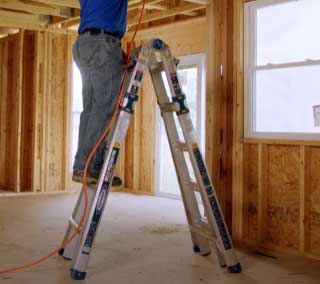I’m on a mission to make my home smarter, and TP-Link’s Tapo and Kasa smart home devices are at the top of my list. Both brands promise convenience, control, and affordability, but which one truly fits my needs—and yours?
In this article, I’ll share my hands-on experience with Tapo and Kasa, breaking down their key features, pros, cons, and differences. My goal is to help you decide which ecosystem suits your smart home dreams by comparing their performance, compatibility, and value in a way that’s clear and relatable.
A Brief Comparison Table
| Feature | Tapo | Kasa |
| Price Range | Budget-friendly ($10-$100) | Slightly pricier ($15-$150) |
| Product Variety | Plugs, cameras, bulbs, sensors | Plugs, bulbs, cameras, switches, light strips |
| App | Tapo app (controls both brands) | Kasa app (Kasa only) |
| Voice Assistants | Alexa, Google, Apple HomeKit | Alexa, Google, limited HomeKit |
| Connectivity | Wi-Fi, some 922MHz with hub | Wi-Fi only |
| Energy Monitoring | Select devices | Most devices |
| Matter Support | Select devices (e.g., P110M) | Select devices (e.g., KS225) |
| Market Focus | Europe, Asia, growing in US | Strong in North America |
My Smart Home Journey Begins
When I first decided to turn my home into a smart haven, I was overwhelmed by the options. Smart plugs, bulbs, cameras—where do you even start? TP-Link, a brand I trusted for my router, kept popping up with two names: Kasa and Tapo.
Both seemed to offer similar gadgets, but the differences intrigued me. Were they just rebranded versions of the same tech, or did they cater to different needs? I decided to test both lines to see which one would make my life easier without breaking the bank.
Spoiler: It’s not a simple choice, but I’ve learned a lot along the way.
Understanding Tapo and Kasa: The Basics
TP-Link, founded in 1996, is a giant in networking gear, and their smart home offerings under Kasa and Tapo have made waves. Kasa launched first, around 2015, aiming for a premium smart home experience with a wide range of devices.
Tapo followed in 2019, targeting budget-conscious users with simpler, cost-effective solutions. Both brands share TP-Link’s reputation for reliability, but their approaches differ. Kasa feels like the seasoned veteran, while Tapo is the scrappy newcomer.
I grabbed a mix of their devices—plugs, bulbs, and cameras—to see how they stack up in real life.
Also Read: Is TP-Link Deco AXE5400 Worth It?
Key Features of Tapo Devices
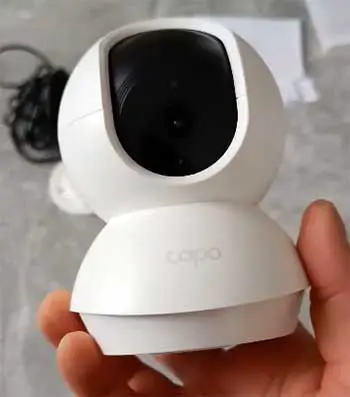
Let’s start with Tapo. I picked up the Tapo P100 Mini Smart Plug and the Tapo C200 Security Camera to test the waters.
The P100 is tiny, about the size of a wall charger, and doesn’t block the second outlet in a duplex socket.
Setup was a breeze: plug it in, open the Tapo app, connect to my Wi-Fi, and I was controlling my desk lamp in minutes.
The app is clean, with a simple interface for scheduling, timers, and remote control.
I could turn my lamp on from the coffee shop down the street, which felt like magic.
The Tapo C200 camera impressed me with its 1080p resolution and pan/tilt functionality.
I set it up in my living room to keep an eye on my dog, and the motion tracking followed her as she chased her tail.
Night vision was clear, and the two-way audio let me scold her for jumping on the couch (not that she listened). Tapo’s compatibility with Amazon Alexa, Google Assistant, and Apple HomeKit meant I could control it with voice commands.
Some Tapo devices, like sensors, use a 922MHz frequency with a hub (like the Tapo H100), which reduces Wi-Fi congestion—a bonus for my busy network.
Tapo’s standout is affordability. The P100 costs around $12.99, and the C200 is about $29.99. For beginners, Tapo’s simplicity is a draw. The app’s automation features, like turning on a plug when the camera detects motion, are intuitive.
However, the range is limited compared to Kasa, and some advanced features, like cloud storage, require a Tapo Care subscription.
Pros of Tapo
- Affordability: Tapo devices are consistently cheaper. The P100 plug at $12.99 and C110 camera at $29.99 are hard to beat for budget shoppers.
- Simplified Setup: The Tapo app is beginner-friendly, with quick setup and a straightforward interface. I had my devices running in under five minutes.
- Apple HomeKit Support: Unlike Kasa, most Tapo devices work with HomeKit, a big plus for Apple users like me.
- Hub-Based Connectivity: Some Tapo devices use a 922MHz frequency with a hub, reducing Wi-Fi strain. This was great for my sensor-heavy setup.
- Compact Design: The P100 plug’s small size means I can use both outlets in a socket, unlike some bulkier competitors.
Cons of Tapo
- Limited Product Range: Tapo focuses on basics—plugs, cameras, bulbs, and sensors. If you want light strips or advanced switches, you’re out of luck.
- Basic Features: While functional, Tapo lacks the advanced automation and customization Kasa offers. Scenes are simpler, which can feel restrictive.
- Subscription for Cloud Storage: Tapo Care is needed for cloud video storage, which adds costs. Local storage is an option, but it’s less convenient.
- Slower Support Response: Tapo’s customer support relies on email and FAQs, with variable response times. I waited two days for a reply to a setup question.
Key Features of Kasa Devices
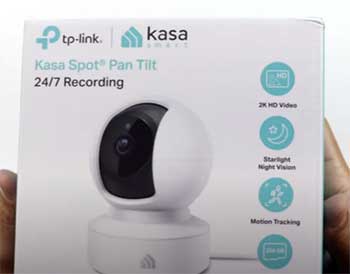
Next, I tested Kasa’s HS103P4 Smart Plug and KC410S Security Camera.
The HS103P4, a four-pack for about $49.99, is slightly bulkier than the Tapo P100 but feels sturdier.
Setup was just as easy, using the Kasa app, which offers more customization options like complex scenes and energy monitoring.
I plugged in my coffee maker and set a schedule to start brewing at 7 AM.
The energy monitoring feature showed me how much power it used, which was great for tracking my electricity bill.
The KC410S camera, priced at around $59.99, boasts 2K resolution and a 360-degree field of view. I mounted it in my backyard, and the outdoor floodlight feature lit up the area when it detected motion.
The video quality was sharper than the Tapo C200, especially at night, and the app’s detailed reports on energy usage and motion events felt more polished. Kasa supports Alexa and Google Assistant but has limited HomeKit compatibility, which was a bummer since I use an iPhone.
Kasa’s strength is its versatility. Beyond plugs and cameras, it offers smart light strips, switches, and even a doorbell (KD110). The app’s advanced automation lets you create scenes, like dimming lights and turning on a plug at sunset.
However, Kasa devices are pricier, and the app can feel overwhelming for new users.
Pros of Kasa
- Wide Product Range: Kasa’s lineup is extensive, from plugs to light strips to doorbells. I loved the variety for building a comprehensive system.
- Advanced Automation: The Kasa app’s scenes and scheduling are robust. I set up a “movie night” scene that dims lights and turns on my TV plug seamlessly.
- Reliable Performance: Kasa devices feel rock-solid. My HS103P4 plugs never dropped connection, even during Wi-Fi hiccups.
- Energy Monitoring: Most Kasa devices track energy usage, which helped me identify power-hungry appliances.
- Strong North American Presence: Kasa’s popularity in the US means better support and availability.
Cons of Kasa
- Higher Price Point: Kasa devices cost more—$49.99 for a four-pack of plugs versus Tapo’s $39.99 for a similar set.
- Limited HomeKit Support: Only a few Kasa devices work with HomeKit, which frustrated me as an Apple user.
- Bulkier Design: Kasa plugs are larger, sometimes blocking adjacent outlets.
- Complex App for Beginners: The Kasa app’s feature depth can overwhelm new users. It took me a day to master its automation settings.
Also Read: Comparison of TP-Link AX3000 And AX5400.
Key Differences Between Tapo And Kasa
- Performance in Real Life
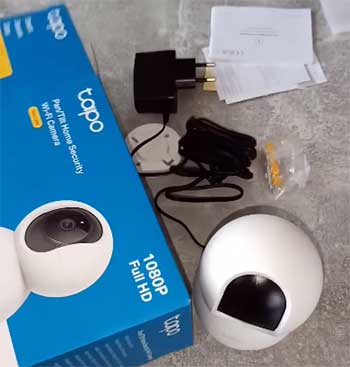
To compare performance, I put both brands through their paces.
I set up a Tapo P100 and Kasa HS103P4 plug to control the same lamp, alternating between them for a week.
Both connected flawlessly to my Wi-Fi, but Kasa’s app responded slightly faster—about a second quicker when toggling the plug remotely.
The Kasa plug’s energy monitoring gave me detailed insights, like how my lamp used 0.1 kWh daily, while Tapo’s basic on/off functionality felt less informative.
For cameras, I tested the Tapo C200 and Kasa KC410S side by side. The Kasa camera’s 2K resolution outshone Tapo’s 1080p, especially in low light.
However, Tapo’s pan/tilt feature was more practical for my living room, letting me scan the entire space. Both handled motion alerts well, but Kasa’s app provided more detailed event logs, which I appreciated for security.
- Connectivity and Compatibility
Connectivity is a big deal in smart homes. Kasa devices rely solely on Wi-Fi, which is simple but can clog your network if you have many devices.
Tapo offers a mix of Wi-Fi and 922MHz hub-based options, which I found useful for reducing Wi-Fi load. For example, my Tapo T100 motion sensor connected to the H100 hub, freeing up bandwidth for my streaming devices.
Both brands integrate with Alexa and Google Assistant, making voice control a breeze. I said, “Alexa, turn on the living room lamp,” and both Tapo and Kasa responded instantly.
Tapo’s broader HomeKit support was a game-changer for me, as I could add devices to my Home app on my iPhone. Kasa’s limited HomeKit compatibility felt like a missed opportunity.
Matter support, the new standard for smart home interoperability, is emerging in both lines. Tapo’s P110M plug and Kasa’s KS225 switch support Matter, but it’s not universal across their ranges. This means future-proofing is a mixed bag—check device specs before buying.
- App Experience: Tapo Vs. Kasa
The app experience is where Tapo and Kasa diverge significantly. The Tapo app, updated in 2023 to control both brands, is my go-to now. It’s sleek, with a minimalistic design that makes adding devices and setting schedules easy.
I created a routine to turn on my Tapo plug at sunset, and it worked flawlessly. However, the app’s automation options are basic compared to Kasa’s.
The Kasa app, while feature-rich, feels busier. It offers advanced scenes, like combining multiple devices for a “good morning” routine that opens blinds and starts the coffee maker. But navigating its menus took some getting used to.
Since the Tapo app now supports Kasa devices, I’ve mostly ditched the Kasa app to avoid juggling two platforms. One caveat: Kasa Care subscriptions for camera storage don’t transfer to Tapo, so you’ll need to resubscribe under Tapo Care.
- Market Presence and Regional Differences
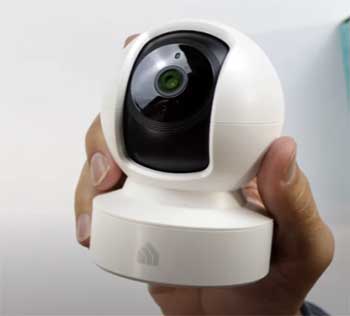
Kasa dominates in North America, where its wider product range and robust support make it a household name.
I found Kasa devices at every major US retailer, from Amazon to Home Depot.
Tapo, however, is bigger in Europe and Asia, with over 10 million app downloads compared to Kasa’s 5 million.
This reflects Tapo’s focus on affordability and regional marketing.
In the US, Tapo’s range is growing but still limited compared to Kasa.
For example, Tapo’s C420S2 wireless camera isn’t widely available in North America, while Kasa’s KD110 doorbell is a US staple.
If you’re outside the US, Tapo might offer more options, but Kasa’s reliability keeps it competitive.
- Security Features
Security is a priority for me, especially with cameras. Tapo’s C325WB camera, with its ColorPro night vision, delivered vibrant footage even in near-darkness. Its $99.99 price tag is a steal for 1520p resolution and IP66 weatherproofing.
Kasa’s KD110 doorbell, at $44.99, offers 1296p video and a wide 160-degree field of view, perfect for my front porch. Both brands support motion detection and two-way audio, but Kasa’s cameras have more advanced features like pan/tilt and floodlights.
One downside: neither brand is cross-compatible. I couldn’t pair my Tapo camera with Kasa’s app or vice versa before the 2023 Tapo app update. Now, the Tapo app handles both, but you’ll need to relink devices to third-party platforms like Alexa after migration.
- Future-Proofing and Longevity
I worried about Kasa’s future since Tapo seems to be TP-Link’s focus, with more product launches under its name. However, TP-Link confirmed in 2024 that Kasa isn’t being discontinued in the US, and both brands will coexist.
The Tapo app’s integration of Kasa devices reassures me that my Kasa plugs won’t become obsolete soon. Still, Tapo’s hub-based approach and Matter support make it feel more future-ready for expanding smart homes.
Which Should You Choose?
After weeks of testing, I’m torn. Tapo’s affordability and simplicity won me over for basic setups. Its HomeKit support and compact designs are perfect for Apple users or those starting small.
But Kasa’s versatility, advanced features, and reliability make it ideal for complex systems. If you’re budget-conscious or new to smart homes, Tapo is your best bet. If you want a comprehensive ecosystem with more customization, Kasa shines.
For my home, I’ve mixed both: Tapo plugs for simple tasks and Kasa cameras for security. The Tapo app ties them together, but I wish TP-Link would clarify their long-term strategy.
Your choice depends on your budget, tech preferences, and whether you prioritize simplicity or flexibility. Either way, both brands deliver value and performance that make smart living accessible.
Also Read: Comparison of TP-Link AX3000 And AX1800.
Frequently Asked Questions (FAQ)
Tapo is great for budget-friendly, simple setups with HomeKit support. Kasa suits those wanting a wider range and advanced features. Choose based on your budget and customization needs.
No, Tapo didn’t replace Kasa. Both are active TP-Link brands, with Tapo focusing on affordability and Kasa on premium features.
TP-Link confirmed in 2024 that Kasa isn’t being discontinued in the US. Both brands will continue, with the Tapo app supporting both.
Yes, since the 2023 Tapo app update, Kasa devices can be controlled via the Tapo app, but Tapo devices don’t work in the Kasa app.
Wrapping Up
You’re probably wondering which smart home brand will make your life easier—Tapo or Kasa? I’ve tested both, and it comes down to your priorities. Tapo’s affordability and beginner-friendly approach make it a fantastic starting point, especially if you’re on a budget or love Apple HomeKit.
Kasa’s robust features and extensive range are perfect for building a comprehensive smart home. By weighing their pros, cons, and features, you can choose the ecosystem that fits your lifestyle.
I’m thrilled with my hybrid setup, and I hope my experience helps you create a smarter, more convenient home.
